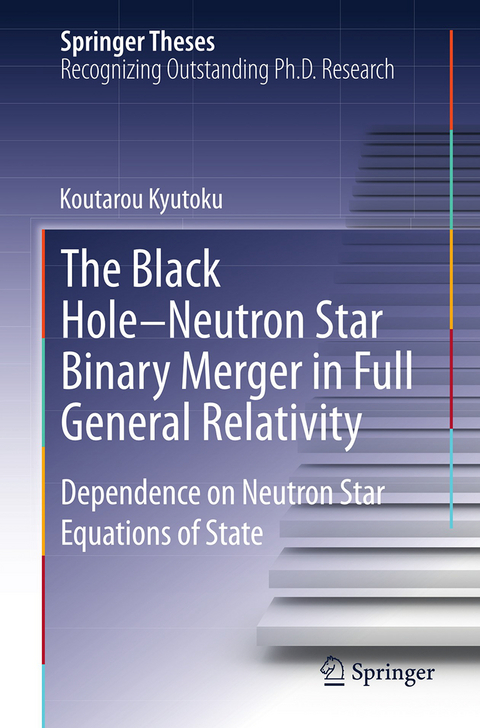
The Black Hole-Neutron Star Binary Merger in Full General Relativity
Dependence on Neutron Star Equations of State
Seiten
2015
Springer Verlag, Japan
978-4-431-54733-4 (ISBN)
Springer Verlag, Japan
978-4-431-54733-4 (ISBN)
This title examines orbital evolution, gravitational wave radiation and merger remnant of the black hole-neutron star binary merger in full general relativity. It clarifies formation of massive accretion disks for short-hard gamma-ray bursts.
This thesis presents a systematic study of the orbital evolution, gravitational wave radiation, and merger remnant of the black hole–neutron star binary merger in full general relativity for the first time. Numerical-relativity simulations are performed using an adaptive mesh refinement code, SimulAtor for Compact objects in Relativistic Astrophysics (SACRA), which adopts a wide variety of zero-temperature equations of state for the neutron star matter.
Gravitational waves provide us with quantitative information on the neutron star compactness and equation of state via the cutoff frequency in the spectra, if tidal disruption of the neutron star occurs before the binary merges. The cutoff frequency will be observed by next-generation laser interferometric ground-based gravitational wave detectors, such as Advanced LIGO, Advanced VIRGO, and KAGRA.
The author has also determined that the mass of remnant disks are sufficient for the remnant black hole accretion disk to become a progenitor of short-hard gamma ray bursts accompanied by tidal disruptions and suggests that overspinning black holes may not be formed after the merger of even an extremely spinning black hole and an irrotational neutron star.
This thesis presents a systematic study of the orbital evolution, gravitational wave radiation, and merger remnant of the black hole–neutron star binary merger in full general relativity for the first time. Numerical-relativity simulations are performed using an adaptive mesh refinement code, SimulAtor for Compact objects in Relativistic Astrophysics (SACRA), which adopts a wide variety of zero-temperature equations of state for the neutron star matter.
Gravitational waves provide us with quantitative information on the neutron star compactness and equation of state via the cutoff frequency in the spectra, if tidal disruption of the neutron star occurs before the binary merges. The cutoff frequency will be observed by next-generation laser interferometric ground-based gravitational wave detectors, such as Advanced LIGO, Advanced VIRGO, and KAGRA.
The author has also determined that the mass of remnant disks are sufficient for the remnant black hole accretion disk to become a progenitor of short-hard gamma ray bursts accompanied by tidal disruptions and suggests that overspinning black holes may not be formed after the merger of even an extremely spinning black hole and an irrotational neutron star.
Dr.Koutaro Kyutoku Cosmophysics Group, Theory Center, IPNS (Institute of Particle and Nuclear Studies), KEK (High Energy Accelerator Research Organization) kyutoku@post.kek.jp
Equations of State of Neutron Star Matter.- Computing Initial Conditions.- Methods of Simulations.- Diagnostics for Numerical Simulations.- The Merger of Nonspinning Black Hole-Neutron Star Binaries.- The Merger of Spinning Black Hole-Neutron Star Binaries.
| Reihe/Serie | Springer Theses |
|---|---|
| Zusatzinfo | XIII, 178 p. |
| Verlagsort | Tokyo |
| Sprache | englisch |
| Maße | 155 x 235 mm |
| Themenwelt | Mathematik / Informatik ► Mathematik ► Algebra |
| Mathematik / Informatik ► Mathematik ► Angewandte Mathematik | |
| Naturwissenschaften ► Physik / Astronomie ► Astronomie / Astrophysik | |
| Naturwissenschaften ► Physik / Astronomie ► Relativitätstheorie | |
| ISBN-10 | 4-431-54733-9 / 4431547339 |
| ISBN-13 | 978-4-431-54733-4 / 9784431547334 |
| Zustand | Neuware |
| Haben Sie eine Frage zum Produkt? |
Mehr entdecken
aus dem Bereich
aus dem Bereich
Buch | Softcover (2022)
Springer Spektrum (Verlag)
39,99 €


